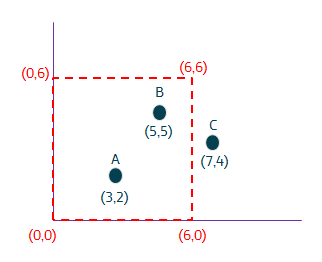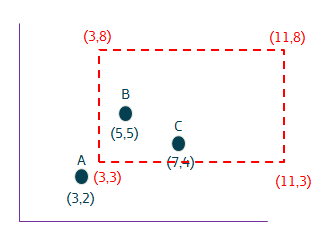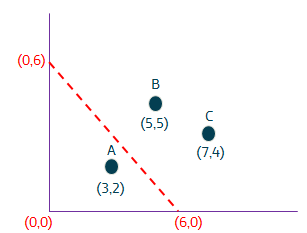Geolocation capabilities
Orion Context Broker has several capabilities related to geolocation that are described in this section. It is strictly required to use MongoDB 2.4 or higher in order to use geolocation features (see requirements section in the installation manual).
Defining location attribute
Entities can have a location, specified by one of its attributes. In order to state which attribute (among all the ones belonging to the entity) defines the location, the "location" metadata is used. For example, the following updateContext request creates the entity "Madrid" (of type "City") with attribute "position" defined as location.
(curl localhost:1026/v1/updateContext -s -S --header 'Content-Type: application/json' --header 'Accept: application/json' -d @- | python -mjson.tool) <<EOF
{
"contextElements": [
{
"type": "City",
"isPattern": "false",
"id": "Madrid",
"attributes": [
{
"name": "position",
"type": "coords",
"value": "40.418889, -3.691944",
"metadatas": [
{
"name": "location",
"type": "string",
"value": "WGS84"
}
]
}
]
}
],
"updateAction": "APPEND"
}
EOF
Additional comments:
- Note that you can use different attributes to specify the location in different entities, e.g. entity "Car1" could be using "position" attribute, while entity "Phone22" could use attribute "coordinates".
- In order to avoid inconsistencies, only one attribute at a time can be defined as location. If you want to redefine the attribute of an entity used for location, first you have to DELETE it, then APPEND the new one (check the section about adding and removing attributes dynamically).
- The value of the location metadata is the coordinates system used. Current version only support WGS84 (which is the one used internally by the MongoDB database) but other systems may be added in future versions.
- The value of the location attribute is a string with two numbers separated by a comma (","): the first number is the latitude and the second is the longitude. Only decimal notation is allowed (e.g. "40.418889"), degree-minute-second notation is not allowed (e.g. "40°44'55''N").
Geo-located queries
Entities location can be used in queryContext or equivalent convenience operations. To do so, we use the scope element, using "FIWARE::Location" as scopeType and an area specification as scopeValue. The query result includes only the entities located in that area, i.e. context elements belonging to entities not included in the area are not taken into account. Regarding area specification, Orion Context Broker allows the following possibilities:
- Area internal to a circumference, given its centre and radius.
- Area external to a circumference, given its centre and radius.
- Area internal to a polygon (e.g. a terrain zone, a city district, etc.), given its vertices.
- Area external to a polygon (e.g. a terrain zone, a city district, etc.), given its vertices.
- Area unions or intersections (e.g. the intersection of a circle and a polygon) are not supported in the current version.
In order to illustrate geo-located queries with polygons, let's consider the following scenario: three entities (A, B and C, of type "Point") have been created in Orion Context Broker, each one in the coordinates shown in the following picture.

Let's consider a query whose scope is the internal area to the square defined by coordinates (0, 0), (0, 6), (6, 6) and (6, 0).

To define a polygon, we use the polygon element which, in sequence, include a vertexList. A vertexList is composed by a list of vertex elements, each one containing a couple of elements (latitude and longitude) that provide the coordinates of the vertex. The result of the query would be A and B.
(curl localhost:1026/v1/queryContext -s -S --header 'Content-Type: application/json' --header 'Accept: application/json' -d @- | python -mjson.tool) <<EOF
{
"entities": [
{
"type": "Point",
"isPattern": "true",
"id": ".*"
}
],
"restriction": {
"scopes": [
{
"type": "FIWARE::Location",
"value": {
"polygon": {
"vertices": [
{
"latitude": "0",
"longitude": "0"
},
{
"latitude": "0",
"longitude": "6"
},
{
"latitude": "6",
"longitude": "6"
},
{
"latitude": "6",
"longitude": "0"
}
]
}
}
}
]
}
}
EOF
Let's consider a query whose scope is the internal area to the rectangle defined by coordinates (3, 3), (3, 8), (11, 8) and (11, 3).

The result of the query would be B and C.
(curl localhost:1026/v1/queryContext -s -S --header 'Content-Type: application/json' --header 'Accept: application/json' -d @- | python -mjson.tool) <<EOF
{
"entities": [
{
"type": "Point",
"isPattern": "true",
"id": ".*"
}
],
"restriction": {
"scopes": [
{
"type": "FIWARE::Location",
"value": {
"polygon": {
"vertices": [
{
"latitude": "3",
"longitude": "3"
},
{
"latitude": "3",
"longitude": "8"
},
{
"latitude": "11",
"longitude": "8"
},
{
"latitude": "11",
"longitude": "3"
}
]
}
}
}
]
}
}
EOF
However, if we consider the query to the external area to that rectangle, the result of the query would be A. To specify that we refer to the area external to the polygon we include the inverted element set to "true".
(curl localhost:1026/v1/queryContext -s -S --header 'Content-Type: application/json' --header 'Accept: application/json' -d @- | python -mjson.tool) <<EOF
{
"entities": [
{
"type": "Point",
"isPattern": "true",
"id": ".*"
}
],
"restriction": {
"scopes": [
{
"type": "FIWARE::Location",
"value": {
"polygon": {
"vertices": [
{
"latitude": "3",
"longitude": "3"
},
{
"latitude": "3",
"longitude": "8"
},
{
"latitude": "11",
"longitude": "8"
},
{
"latitude": "11",
"longitude": "3"
}
],
"inverted": "true"
}
}
}
]
}
}
EOF
Let's consider a query whose scope is the internal area to the triangle defined by coordinates (0, 0), (0, 6) and (6, 0).

The result of the query would be A.
(curl localhost:1026/v1/queryContext -s -S --header 'Content-Type: application/json' --header 'Accept: application/json' -d @- | python -mjson.tool) <<EOF
{
"entities": [
{
"type": "Point",
"isPattern": "true",
"id": ".*"
}
],
"restriction": {
"scopes": [
{
"type": "FIWARE::Location",
"value": {
"polygon": {
"vertices": [
{
"latitude": "0",
"longitude": "0"
},
{
"latitude": "0",
"longitude": "6"
},
{
"latitude": "6",
"longitude": "0"
}
]
}
}
}
]
}
}
EOF
However, if we consider the query to the external area to that triangle (using the inverted element set to "true"), the result of the query would be B and C.
(curl localhost:1026/v1/queryContext -s -S --header 'Content-Type: application/json' --header 'Accept: application/json' -d @- | python -mjson.tool) <<EOF
{
"entities": [
{
"type": "Point",
"isPattern": "true",
"id": ".*"
}
],
"restriction": {
"scopes": [
{
"type": "FIWARE::Location",
"value": {
"polygon": {
"vertices": [
{
"latitude": "0",
"longitude": "0"
},
{
"latitude": "0",
"longitude": "6"
},
{
"latitude": "6",
"longitude": "0"
}
],
"inverted": "true"
}
}
}
]
}
}
EOF
Now, in order to illustrate circle areas, let's consider the following scenario: three entities (representing the cities of Madrid, Alcobendas and Leganes) have been created in Orion Context Broker. The coordinates for Madrid are (40.418889, -3.691944); the coordinates for Alcobendas are (40.533333, -3.633333) and the coordinates for Leganes are (40.316667, -3.75). The distance between Madrid and Alcobendas is around 13.65 km, and the distance between Madrid and Leganes is arround 12.38 km (based on: http://boulter.com/gps/distance/).
Let's consider a query whose scope is inside a radius of 13.5 km (13500 meters) centred in Madrid.

To define a circle, we use the circle element which, in sequence, include a three elements: centerLatitude (the latitude of the circle center), centerLongitude (the longitude of the circle center) and radius (in meters). The result of the query would be Madrid and Leganes.
(curl localhost:1026/v1/queryContext -s -S --header 'Content-Type: application/json' --header 'Accept: application/json' -d @- | python -mjson.tool) <<EOF
{
"entities": [
{
"type": "City",
"isPattern": "true",
"id": ".*"
}
],
"restriction": {
"scopes": [
{
"type": "FIWARE::Location",
"value": {
"circle": {
"centerLatitude": "40.418889",
"centerLongitude": "-3.691944",
"radius": "13500"
}
}
}
]
}
}
EOF
Let's consider a query whose scope is inside a radius of 15 km (15000 meters) centred in Madrid.

The result of the query would be Madrid, Leganes and Alcobendas.
(curl localhost:1026/v1/queryContext -s -S --header 'Content-Type: application/json' --header 'Accept: application/json' -d @- | python -mjson.tool) <<EOF
{
"entities": [
{
"type": "City",
"isPattern": "true",
"id": ".*"
}
],
"restriction": {
"scopes": [
{
"type": "FIWARE::Location",
"value": {
"circle": {
"centerLatitude": "40.418889",
"centerLongitude": "-3.691944",
"radius": "15000"
}
}
}
]
}
}
EOF
Let's consider a query whose scope is outside a radius of 13.5 km (13500 meters) centred in Madrid.

We use the inverted element set to "true". The result of the query would be Alcobendas.
(curl localhost:1026/v1/queryContext -s -S --header 'Content-Type: application/json' --header 'Accept: application/json' -d @- | python -mjson.tool) <<EOF
{
"entities": [
{
"type": "City",
"isPattern": "true",
"id": ".*"
}
],
"restriction": {
"scopes": [
{
"type": "FIWARE::Location",
"value": {
"circle": {
"centerLatitude": "40.418889",
"centerLongitude": "-3.691944",
"radius": "13500",
"inverted": "true"
}
}
}
]
}
}
EOF